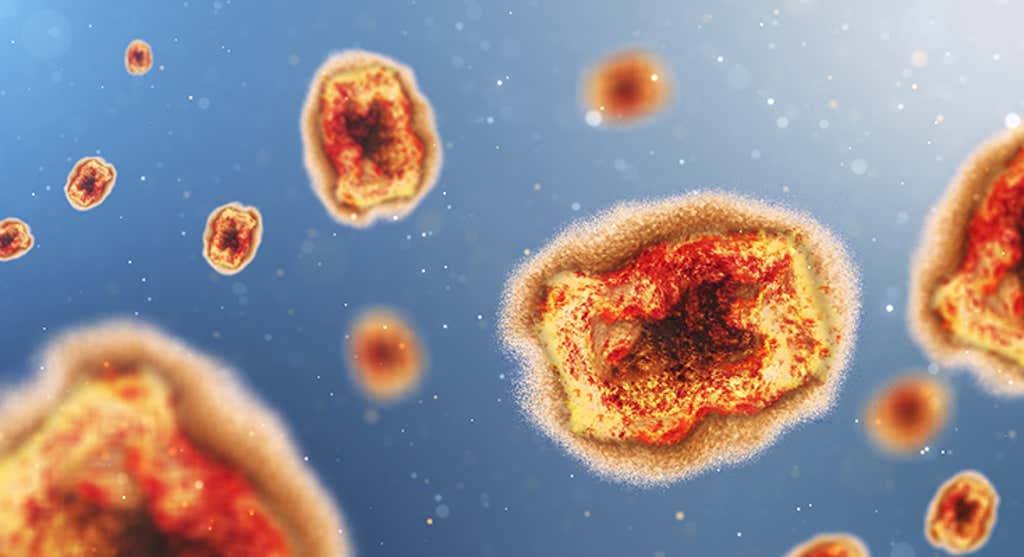
Health care workers treating patients who may be infected with the monkeypox virus should use proper N95 masks, eye protection and isolation protocols similar to those of COVID-19, says Public Health Ontario. As of June 10, 2022, there were 112 cases of monkeypox in Canada, with the vast majority being in Quebec.
In an Infection Prevention and Control document released in late May, Public Health Ontario states that while historically monkeypox has been limited to prolonged face-to-face contact or skin-to-skin contact with a lesion, “the possible transmission during the prodromal period and similarities to variola virus (smallpox), the potential for airborne transmission has been suggested.”
The primary mode of person-to person transmission has been through respiratory secretions, and direct contact with skin lesions or a patient’s items that have been contaminated. The incubation period averages 7 to 14 days (range 5 to 21 days). A person is most commonly contagious from the onset of initial lesions (typically on the tongue and in the mouth), until scabs have fallen off and new skin is present. Some cases may be contagious during their early set of symptoms (prodrome), such as fever, malaise and headache, before the rash develops.
In addition to Routine Practices, the following Additional Precautions — Airborne/Droplet/Contact Precautions are to be used.
Room Placement:
- Airborne isolation rooms (AIR) with negative pressure ventilation.
- When AIRs are not available, the patient can be placed in a single room with the door closed with dedicated toileting facility.
- If neither option is feasible, then precautions should be taken to minimize exposure to surrounding individuals, such as having the patient don a medical mask over their nose and mouth as tolerated and covering exposed skin lesions with clothing, sheet or gown as best as possible.
Hand Hygiene as per the Four Moments of Hand Hygiene:
https://www.publichealthontario.ca/en/Health-Topics/Infection-Prevention-Control/Hand-Hygiene
Personal Protective Equipment (PPE) for Health Care Workers:
- Fit-tested and seal checked N-95 respirator (or equivalent); perform seal check after donning N95 respirator;
- Gloves;
- Gown; and
- Eye protection (e.g., face shields or goggles).
Duration:
Additional Precautions are maintained until all scabs have fallen off and new skin is present.
Patient Transport:
Have the patient wear clean clothes/gown, wash their hands, wear a medical mask and cover their lesions to the best extent possible for transport.
Laundry:
Special handling of linen from patients on Additional Precautions is not required. Care should be taken in the handling of soiled linen to prevent dispersal of microorganisms.
Waste Disposal:
Containment and disposal of contaminated waste (e.g., dressings) in accordance with facility-specific guidelines for infectious waste.
Environmental Cleaning:
Health care-grade cleaning and disinfecting agents with a Drug Identification Number (DIN) are appropriate for cleaning and disinfecting environmental surfaces and shared equipment in the patient care environment. Follow the manufacturer’s recommendations for dilution and contact time.












